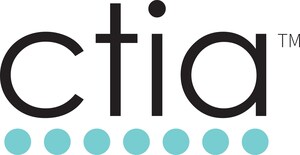WASHINGTON, June 29, 2021 /PRNewswire/ -- In critical moments, wireless devices are a lifeline. With the 2021 tornado, Atlantic hurricane and western wildfire seasons now underway, consumers can take a few easy steps to make sure both their families and their mobile devices are prepared in case of an emergency.
Preparing for an emergency or disaster:
- Carry a spare cellphone charger and external charging device. Keep devices and chargers in a waterproof bag. Fully charge your batteries when a disaster or storm is approaching.
- Confirm that you have not opted-out of receiving important Wireless Emergency Alerts (WEAs).
- Download emergency apps including FEMA, AccuWeather, and Red Cross Emergency to help keep you updated as the situation unfolds. Make sure you can access travel and transportation apps in case you need to evacuate. If you don't have a flashlight app built into your mobile phone, download one.
- Save phone numbers and email addresses for police, fire, hospital, school, vet and other emergency resources in your phone. If you are a parent, find out how your children's school or school district will notify you during a weather or other emergency.
- Know how to forward your home phone number to your mobile device.
- Take photos and/or videos of your property periodically to have available for insurance purposes. Back up your files to a secure storage space to ensure images and videos are saved separately from your device.
During and after an emergency or disaster:
- Use voice calls only for important communication and keep them short. Instead use text messaging, email or social media to let your loved ones know your status. Keep messages short and simple.
- Conserve your cellphone's battery life:
- Whenever possible, turn on your phone's power saving mode.
- Reduce your screen's brightness and adjust your settings to ensure your phone's screen goes into sleep mode faster.
- Close unused apps and turn off push notifications so nothing is running in the background.
- Turn off Bluetooth, Wi-Fi and location-based services when you don't need them.
- Set your email to arrive manually rather than having it automatically sent to your device.
- Check your local wireless store to see if they are open and providing charging station services during emergencies.
- For 9-1-1, call if you can or text if you can't. Stay on the line until the operator tells you it's safe to end the call. When possible, have detailed location information ready.
While we don't always know when a disaster will strike, wireless providers work hard to ensure networks are strong and resilient. For more information on how the wireless industry prepares for natural disasters and what consumers can do to be ready for an event, visit these resources:
- CTIA: Emergency Preparedness
- Ready.Gov
- Federal Emergency Management Agency (FEMA)
- National Hurricane Center
- American Red Cross
About CTIA
CTIA® (www.ctia.org) represents the U.S. wireless communications industry and the companies throughout the mobile ecosystem that enable Americans to lead a 21st century connected life. The association's members include wireless carriers, device manufacturers, suppliers as well as apps and content companies. CTIA vigorously advocates at all levels of government for policies that foster continued wireless innovation and investment. The association also coordinates the industry's voluntary best practices, hosts educational events that promote the wireless industry and co-produces the industry's leading wireless tradeshow. CTIA was founded in 1984 and is based in Washington, D.C.
SOURCE CTIA
Related Links
WANT YOUR COMPANY'S NEWS FEATURED ON PRNEWSWIRE.COM?
Newsrooms &
Influencers
Digital Media
Outlets
Journalists
Opted In




Share this article